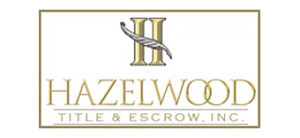What is Title Insurance?
There are few things more important than protecting your home, usually the largest single investment many of us will ever make. Title insurance is a policy that protects a buyer against errors, omissions or defects in the title of the property which may threaten the buyer’s financial investment. There are two basic kinds of title insurance: lender protection insurance and owner’s title insurance.
Most lenders require mortgagee title insurance as security for their investment in real estate, similar to requiring fire or flood insurance coverage. Lender Protection Insurance protects the lender’s investment, especially in locales in which the lender knows little about the market.
Owner’s Title Insurance has been offered for more than 150 years, because even the best title search and examination cannot protect your equity and home from matters not appearing in the public record. Standard policies cover you for defects and liens in the history of your title through the date and time your Deed is recorded in the public records.
The ALTA Homeowner’s Policy of Title Insurance (Enhanced Policy) provides coverage for many additional risks, including some which might occur after the deed is recorded.
Below is a coverage comparison that will help you decide which policy works best for you to protect your ownership in your home.
| Both Policies Include: | Standard Policy | Enhanced Policy |
| • Mechanics Lien Coverage | Yes | Yes |
| • Third Party claims an interest in the title | Yes | Yes |
| • Improperly executed documents | Yes | Yes |
| • Pre-Policy forgery, fraud or duress | Yes | Yes |
| • Non-recorded restrictive covenants | Yes | Yes |
| • Defective recording of documents | Yes | Yes |
| • Prior recorded liens not disclosed in the policy | Yes | Yes |
| • Unmarketability of the title | Yes | Yes |
| • Policy insures anyone who inherits the property from you | Yes | Yes |
| Additional coverages in enhanced policy: | ||
| • Policy insures the Trustee of your estate-planning trust | No | Yes |
| • Policy insures the beneficiaries of your trust upon your death | No | Yes |
| • Automatic increase in coverage up to 150% (not based on inflation) | No | Yes |
| • Post Policy Forgery | No | Yes |
| • Post Policy encroachment onto insured land | No | Yes |
| • Legal right to ACTUAL vehicular and pedestrian access | No | Yes |
| • Coverage for certain losses due to Building Permit violations (subject to a deductible and liability limits) | No | Yes |
| • Coverage for certain losses due to existing violation of subdivision law (subject to a deductible and liability limits) | No | Yes |
| • Post policy structural damage from third party easement for mineral extraction | ||
| • Violation of restrictive covenants identified in the Policy: | ||
| – Resulting in loss from correction or removal | No | Yes |
| – Resulting in loss of title | No | Yes |
| – Resulting in loss of use where single family dwelling prohibited | No | Yes |
| • Forced removal of existing structures that: | ||
| – Encroach onto an easement identified in the Policy | No | Yes |
| – Violate a building restriction line identified in the Policy | No | Yes |
| – Encroach onto a neighbor’s land (subject to a deductible and liability – Limits if boundary wall or fence) | No | Yes |
| Land cannot be used for single family dwelling under zoning ordinance | No | Yes |
For Comparison Purposes Only. Both policies contain insuring provisions, conditions, stipulations, exclusions and exceptions as set out by the individual underwriter and the American Land Title Association.
You may wish to obtain title insurance coverage, including affirmative coverage for mechanic’s liens. Title insurance will insure you against loss or damage, resulting from defects in the title and pay defense costs in the event of a challenge in your title.

